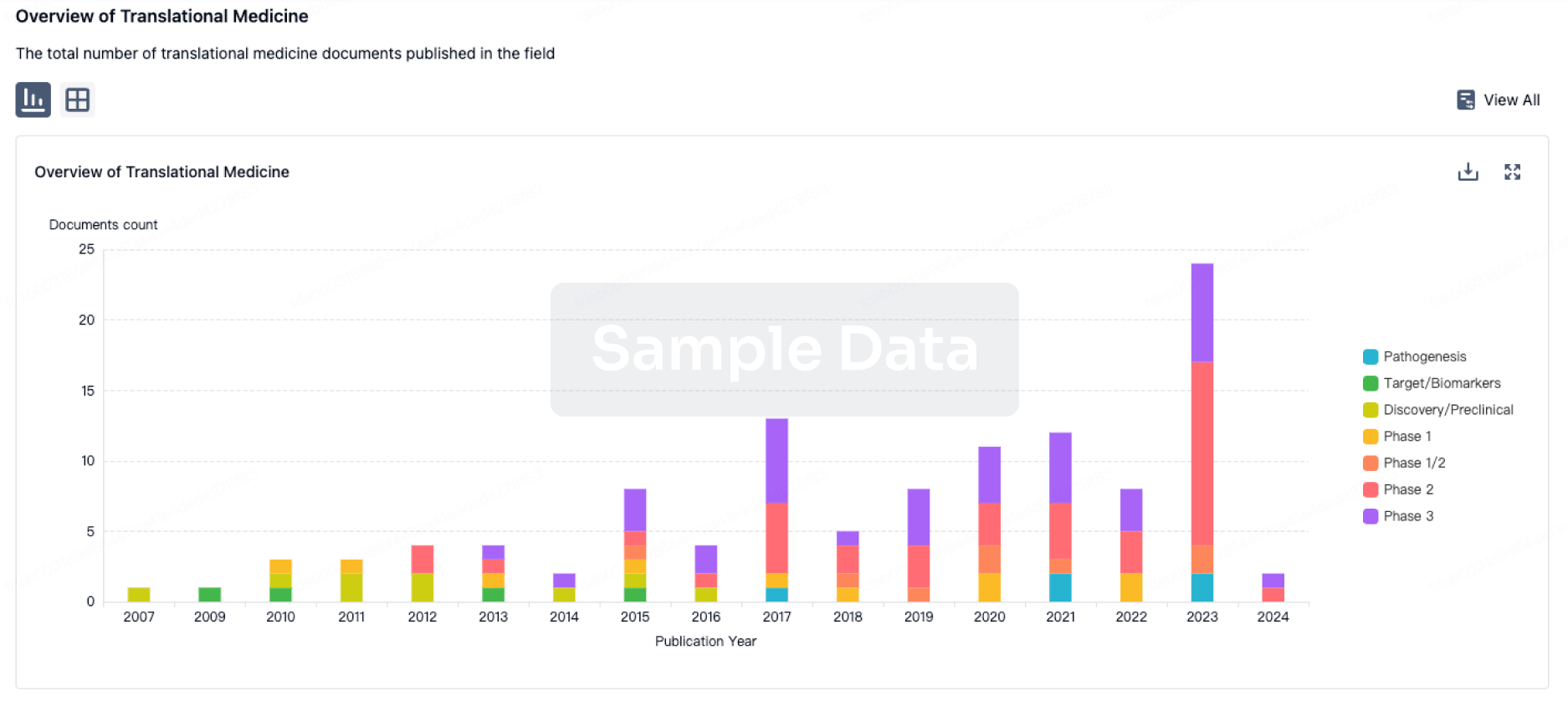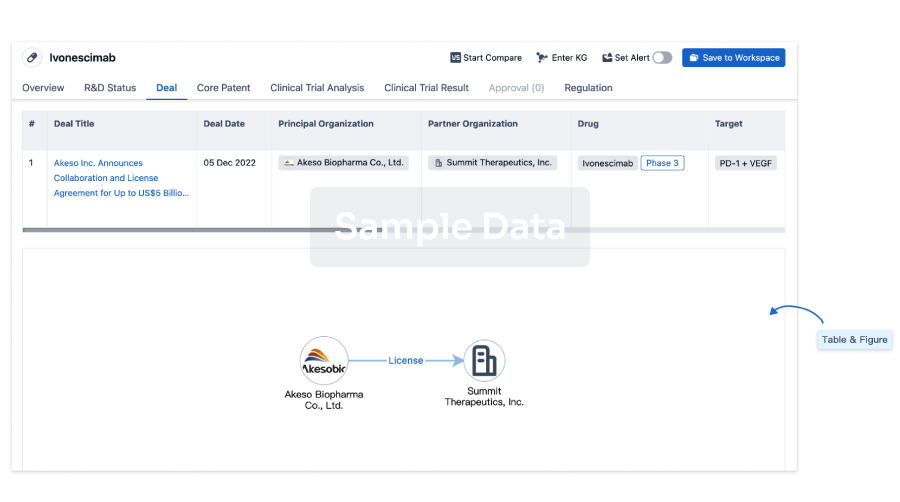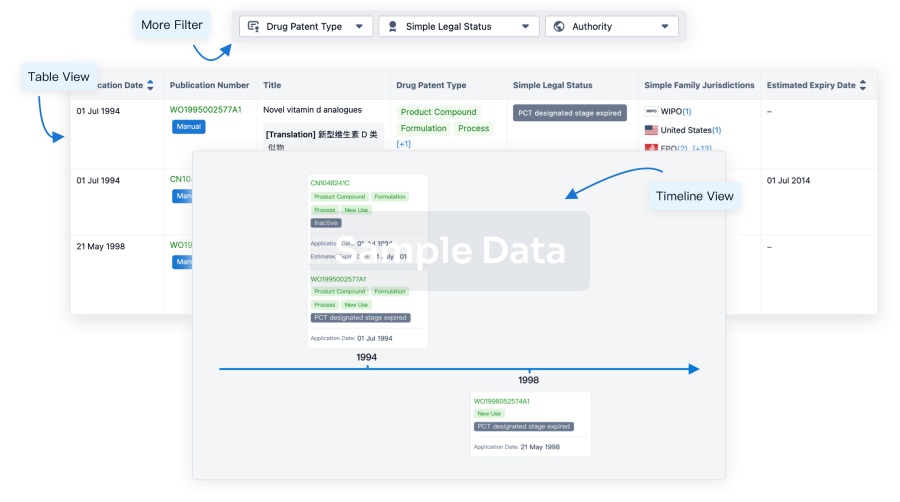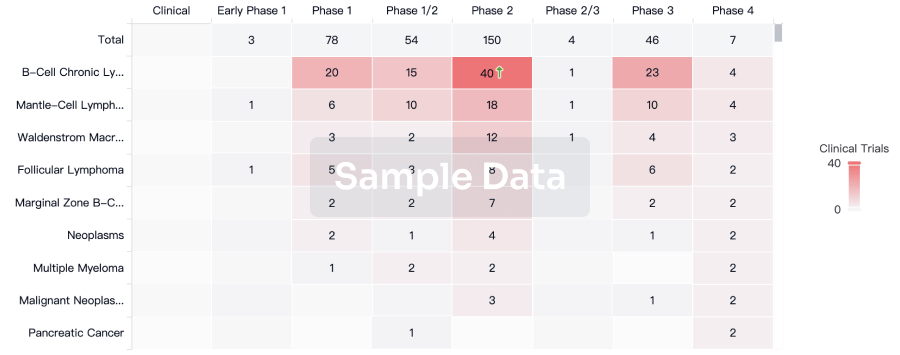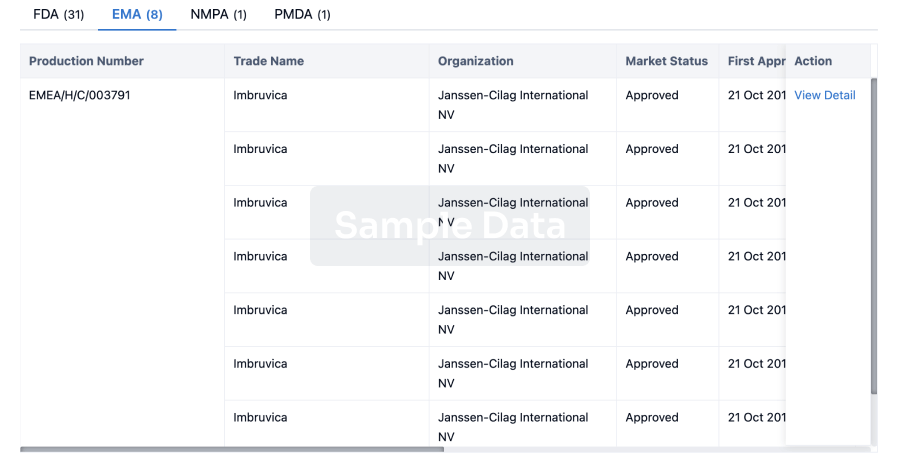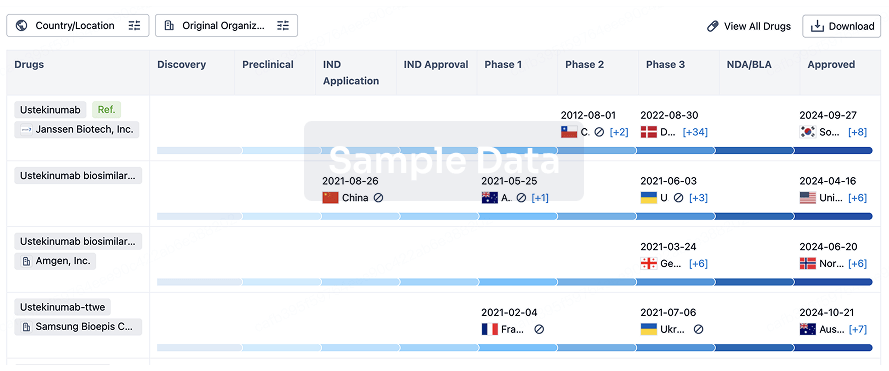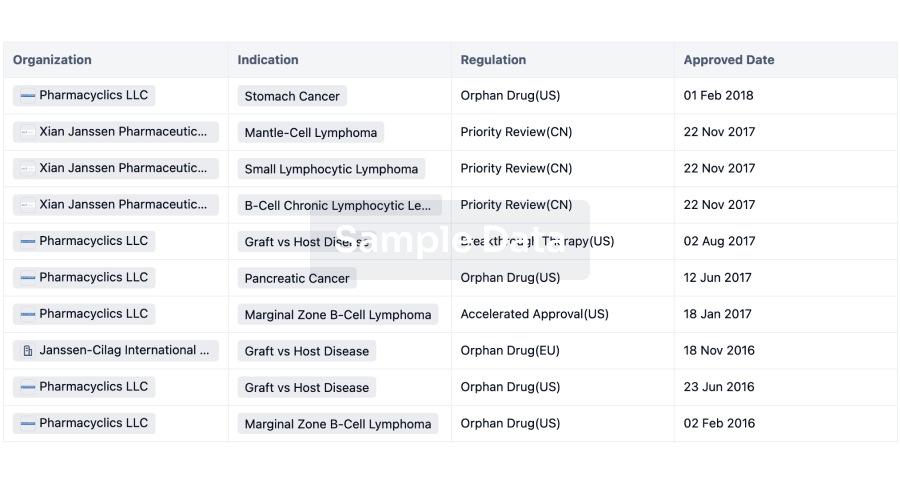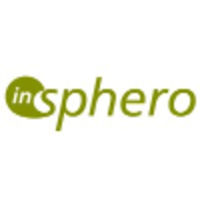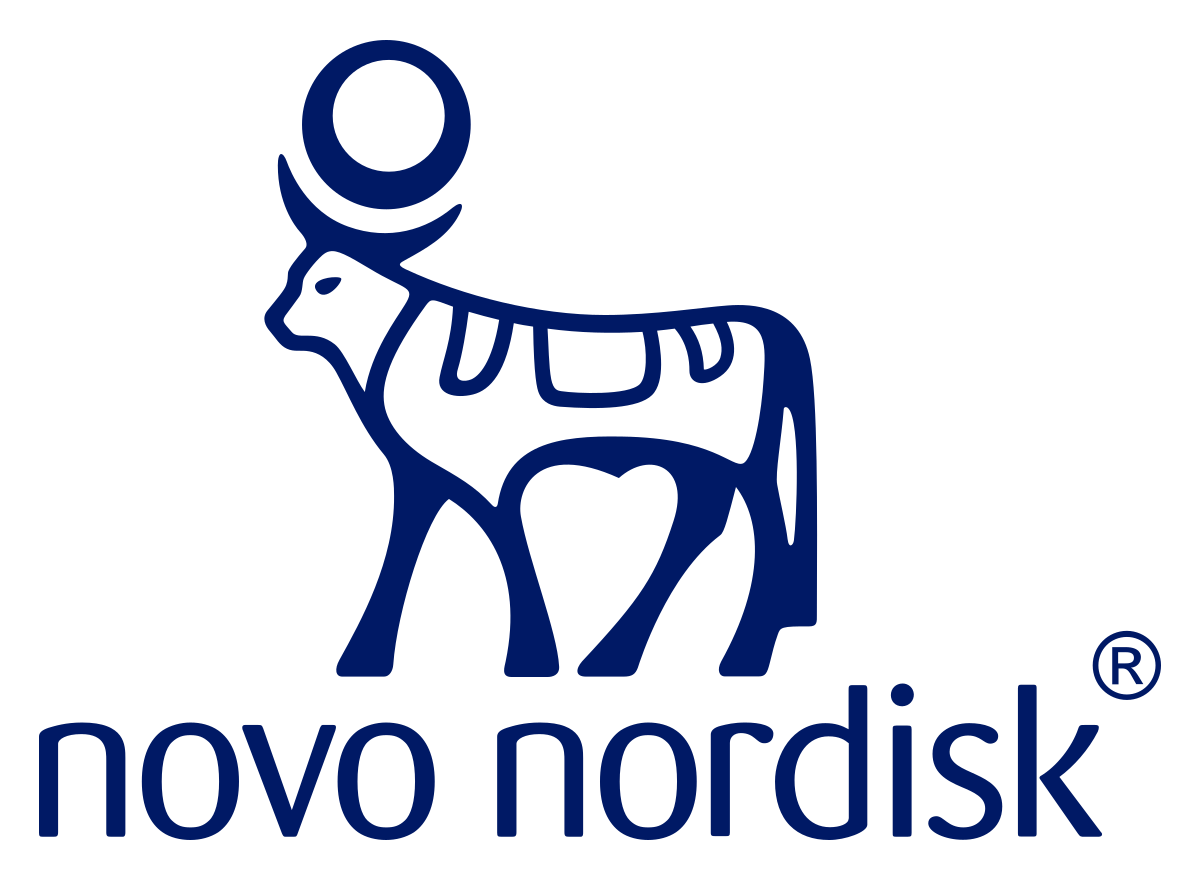iStock,
NWM
Drug candidates don’t usually move among Big Pharma, but these five biotechs helped facilitate such hand-offs, scooping up assets from one pharma on the cheap before being bought out for billions by another.
In the drugmaking game, there’s very little that companies won’t do to keep their pipelines healthy. But there’s one kind of deal that’s pretty much verboten in the industry: a direct Big Pharma–to–Big Pharma transfer of assets. That is, unless you have a biotech intermediary.
Big companies certainly can work together—see Regeneron and Sanofi’s blockbuster Dupixent franchise that stems from a 2007 research agreement. But the way that assets typically get swapped between big companies is via a smaller biotech.
In these cases, a small company picks up assets from a Big Pharma. They could be from the storeroom, unlikely to ever be developed until a group of scientists and investors come along with an idea—much like Ensho Therapeutics that nabbed treatments from Japan’s Eisai. Or like
SpringWorks Therapeutics
, which had backing within Pfizer to spin out the assets to form a singular rare disease biotech.
This is typically a smart beginning for a company. Often, the Big Pharma will have already done some initial safety testing allowing a more advanced clinical start than with a fresh, preclinical asset. The biotech then does some legwork proving out the asset and, if all goes well, the company gets acquired, often by a Big Pharma and usually for a hefty sum.
Here,
BioSpace
looks at five such cases, tracing how these assets made it from one Big Pharma to another, typically through a hefty acquisition, and charting how these products may fare under their new owners.
BioSpace
Captyla Becomes a Market Force
Pharmas involved:
BMS ⇒ J&J
Biotech intermediary:
Intra-Cellular Therapies
Sale prices:
Up to $16 million ⇒ $14.6 billion
Aside from being the largest M&A deal this year so far, Johnson & Johnson’s
$14.6 billion acquisition
of Intra-Cellular Therapies in January is also a great example of how assets can pass from pharma to pharma.
More than 20 years ago, on May 31, 2005, Bristol Myers Squibb
handed off
a clutch of assets to Intra-Cellular in exchange for a $1 million upfront payment, plus milestones that could reach up to $14.8 million. Among these assets was a molecule called ITI-007, an orally available atypical antipsychotic drug that the biotech at the time planned to develop for schizophrenia and other disorders of the central nervous system.
This deal would eventually pay off massively for Intra-Cellular. In late 2013, ITI-007
notched a mid-stage win
, significantly improving both positive and negative symptoms in patients with acutely exacerbated schizophrenia. The drug, also called lumateperone,
sustained its clinical benefit
through Phase III.
These findings would ultimately carry lumateperone to an
FDA approval in December 2019
for schizophrenia, to be marketed as Caplyta. The drug won
another approval
nearly two years later, this time for bipolar depression in adults. With two neuropsychiatric conditions, Caplyta became a market force for Intra-Cellular, bringing in
$680.5 million in 2024
for 47% year-on-year growth.
Caplyta was the centerpiece of the acquisition in January this year, with J&J noting the drug’s
potential expansion into major depressive disorder
(MDD). In December 2024, Intra-Cellular filed a supplemental application for the drug in this indication, backed by Phase III data showing that Caplyta, when combined with an antidepressant, significantly eases symptoms versus placebo. If approved, Caplyta could access a market worth over $1 billion.
Pfizer Hands Over Afimkibart for the Vant Life
Pharmas involved:
Pfizer ⇒ Roche
Biotech intermediary:
Telavant
Sale prices:
Unknown ⇒ $7.1 billion
For a company like Roivant—the entire model of which involves forming a spinout company around a molecule to take forward—passing assets on to Big Pharma is par for the course.
Such is the case for gastro-focused Telavant, which
launched
in late 2022 in partnership with Pfizer. The drug at the heart of Telavant came from the Big Pharma: the monoclonal antibody PF-06480605, which is designed to target
TL1A
, a cytokine that plays a role in the inflammatory signaling cascade. Under the Televant fold, the drug candidate was given the name RVT-3101.
The pickup quickly proved its worth to Roivant. In June 2023, the biotech touted a
29% clinical remission rate at 14 weeks
, which further improved to 36% at 56 weeks, pointing to RVT-3101’s long-term efficacy. At the 56-week follow-up, 50% of patients on Telavant’s antibody also saw endoscopic improvement, while 21% achieved endoscopic remission.
Mergers & acquisitions
Q3 Saw Some of the Highest-Value Biopharma Acquisitions of the Year So Far
J&J still holds the top deal of the year by value with its $14.6 billion buy of Intra-Cellular in January, but the next four biggest acquisitions came in the past four months.
October 1, 2025
·
2 min read
·
Annalee Armstrong
Read More
A month later, Telavant
launched
a Phase II study for RVT-3101 in moderately to severely active Crohn’s disease, another type of inflammatory bowel condition.
In October 2023, Roche
put down $7.1 billion
to buy it all. Pfizer retains RVT-3101 rights outside of the U.S. and Japan. As part of its Telavant takeover, Roche obtained Pfizer’s 25% stake in the spinout.
Since the acquisition, RVT-3101 has been renamed afimkibart and advanced into late-stage development for ulcerative colitis and Crohn’s disease, according to Roche’s
half-year 2025 report
. The pharma expects to submit an approval application for the former indication in 2027 and the latter as early as 2028.
Karuna Dusts Off Lilly’s Xanomeline
Pharmas involved:
Lilly ⇒ BMS
Biotech intermediary:
Karuna
Sale prices:
$100,000 ⇒ $14 billion
After handing off a schizophrenia asset to J&J, BMS in December 2023
paid $14 billion
to get back into the indication, acquiring Karuna Therapeutics and its muscarinic antipsychotic drug.
The drug would go on to win the
FDA’s approval in September 2024
under the brand name Cobenfy, unlocking the first new treatment mechanism for schizophrenia in more than three decades.
Cobenfy’s origins stretch back many years—and to the shelves of another Big Pharma company. Xanomeline, the active ingredient in Cobenfy, was first fashioned as a therapy for Alzheimer’s disease under Eli Lilly.
Steven Paul, who was in charge of xanomeline’s studies at Lilly, told
BioSpace
in an October interview that it was xanomeline’s action on acetylcholine that made it an attractive intervention for a disease characterized by the loss of neurons. “If we could stimulate the receptors for acetylcholine, maybe in the absence of those neurons we could still enhance memory and learning,” Paul explained.
Safety issues proved to be a deal-breaker for Lilly, however, with xanomeline often triggering nausea and vomiting.
A breakthrough for xanomeline came with Karuna, which posited that combining it with a muscarinic agonist could counter the toxicity issues. In 2018, the biotech
raised $42 million
in a series A to test the theory. The new combined drug was dubbed KarXT, and from there, things moved quickly: an
$80 million series B in April 2019
followed by
an IPO a few months later
. BMS was eager to pick up the late-stage asset and offered to buy Karuna in December 2023, shepherding the drug to approval.
.responsive-container {
display: flex;
flex-wrap: wrap;
border: 1px solid #ededed;
font-family: Helvetica, Arial, Sans-Serif;
padding: 20px 20px 10px 20px;
}
.column-left {
flex: 1;
max-width: 45%;
padding: 20px 20px 10px 20px;
}
.column-right {
flex: 2;
padding: 20px 20px 10px 20px;
}
@media (max-width: 768px) {
.column-left,
.column-right {
max-width: 100%;
flex: 100%;
padding: 10px 0;
}
}
Subscribe to BioPharm Executive!
Market insights, trending business and policy stories for biopharma leaders
hbspt.forms.create({
region: "na1",
portalId: "4413123",
formId: "7c139b3c-ff0b-44e0-bffe-f449801dca59",
onFormSubmitted: function($form, data) {
window.dataLayer = window.dataLayer || [];
window.dataLayer.push({
'event': 'GTMevent',
'event_name': 'newsletter_sign_up'
});
}
});
Sine then, however, Cobenfy has struggled in the clinic, with data from the Phase III ARISE study in April 2025 showing that using the drug alongside atypical antipsychotics did not significantly improve symptom burden in patients with schizophrenia as compared with placebo. In a note at the time, Leerink Partners said that the failure indicates that Cobenfy may have “far less potential than we originally anticipated.”
During BMS’ Q2 earnings call in July, Chief Medical Officer Samit Hirawat
said
that the pharma has yet to meet with the FDA to discuss ARISE’s findings and Cobenfy’s future.
Akero Runs With Amgen’s Efruxifermin
Pharmas involved:
Amgen ⇒ Novo Nordisk
Biotech intermediary:
Akero
Sale prices:
$121,353 ⇒ $5.2 billion
In January this year, Akero Therapeutics’ investigational FGF21 analog efruxifermin elicited a
24% reduction
in liver fibrosis versus placebo in patients with metabolic dysfunction-associated steatohepatitis (MASH) in January. The results were so good, they attracted the attention of one Big Pharma suitor and sent another
looking for a potential competitor
.
Novo Nordisk in October took the plunge and acquired Akero for $54 per share, a purchase price that amounted to a 19% premium to the biotech’s average share price over the prior 30 days. All told, Novo put $5.2 billion on the line for the takeover.
Unsurprisingly, the star of the buyout was efruxifermin, which analysts at BMO Capital Markets said in an Oct. 9 note is a “clean pipeline fit” for the Danish giant.
Mergers & acquisitions
The Top Big Pharmas Have $1.2T in Stretch M&A Firepower Available
The two most historically deal-conservative Big Pharmas have the most money to play with for a major M&A transaction, according to a recent Stifel analysis.
October 1, 2025
·
6 min read
·
Annalee Armstrong
Read More
But efruxifermin’s origins are humble, being punted from Amgen’s portfolio and
handed off to Akero in June 2018
. The drug’s development was funded with just $65 million in series A money raised in
June 2018
—which very quickly paid off for investors. In March 2020, the drug, then known as AKR-001,
aced a Phase IIa study
, showing significant reductions in liver fat and liver enzymes versus placebo.
Not all has been easy for efruxifermin, however, with the candidate in October 2023
failing to significantly cut liver fibrosis
in the Phase IIb SYMMETRY study, triggering a massive investor selloff. But Akero stuck with the FGF21 analog and in March 2024 bounced back with Phase IIb data from a study called HARMONY showing at least a one stage improvement in liver fibrosis in 75% of treated patients, versus only 24% in placebo comparators.
With efruxifermin in its pocket, Novo now hopes to reach some of the
22 million patients
with MASH in the U.S. alone. By some estimates, the market could hit
$16 billion worldwide by 2033
.
Boston Pharma Takes Efimosfermin to Best-In-Class
Pharmas involved:
Novartis ⇒ GSK
Biotech intermediary:
Boston Pharma
Sale prices:
Unknown ⇒ $1.2 billion
Also looking to play in the MASH arena is GSK, which in May this year
paid $1.2 billion upfront
to buy Boston Pharmaceuticals’ efimosfermin—a former Novartis asset.
An FGF21 analog like efruxifermin, efimosfermin came to Boston Pharma in September 2020
from Novartis
for an undisclosed payment.
In the years that followed, Boston Pharma ushered the drug, called BOS-580, through clinical development. In June 2023, the company
announced
that the molecule significantly lowered liver fat content in a Phase IIa MASH study, while also addressing key biomarkers of liver injury and fibrosis.
Follow-on mid-stage data in November 2024 demonstrated that
more than 45% of patients
treated with efimosfermin saw at least a one-stage improvement in fibrosis without MASH worsening, as opposed to only 20.6% of those who received a placebo. Meanwhile, 38.7% of treated patients achieved fibrosis improvement and MASH resolution, versus 17.6% in placebo.
GSK touted efimosfermin’s “best-in-class” potential for MASH when announcing its purchase of the asset from Boston, noting that it is ripe for Phase III development.
C-suite
Sophie Kornowski: From Medicine Taste-Tester to Data-Driven Dealmaker
What will Boston Pharmaceuticals CEO Sophie Kornowski do now that the company is selling off its pipeline and winding down operations? Whatever it is, data will take her there.
July 22, 2025
·
5 min read
·
Annalee Armstrong
Read More
Aside from testing the drug as a monotherapy, GSK also plans to combine it with an in-house MASH asset called GSK’990, a siRNA therapy that is currently in mid-stage development. GSK also has ambitions to push efimosfermin beyond MASH, particularly into alcohol-related liver disease.
Exact plans for efimosfermin remain murky, however, with the pharma only revealing in its Q2 presentation that it expects a
MASH launch in 2029
.

